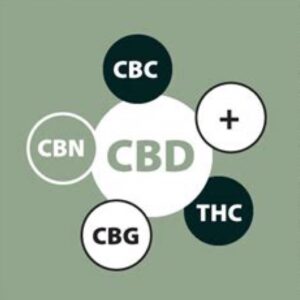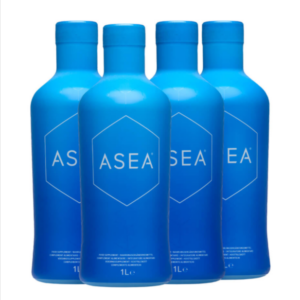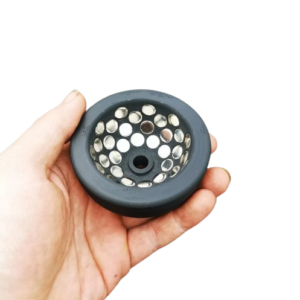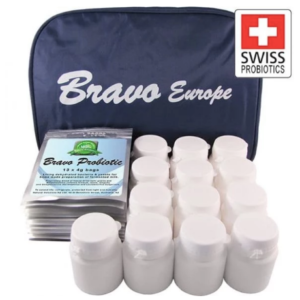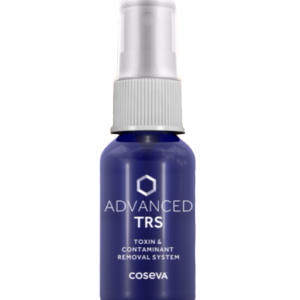Differences between: CBD, CBN, CBG, CBDV, CBC and CBDa.
Doctors and scientists have discovered that CBD can be used to help manage conditions including inflammation, nausea, epileptic seizures, anxiety, depression, sleep disorders, and chronic pain—all without any psychoactive effects.
First Things First, What Are Cannabinoids?
These compounds are responsible for the medicinal effects of cannabis, each compound offering distinctive benefits. To date, scientists have discovered 100+ cannabinoids.
The plant is symbiotic in design with the human system and human health.
Without this compound our body is missing something
Classes of Cannabinoids
- Cannabichromene (CBC)
- Cannabigerol (CBG)
- Tetrahydrocannabinol (THC)
- Cannabidiol (CBD)
- Cannabinol (CBN)
- Cannabinodiol (CBDL)
- Other cannabinoids including cannabielsoin (CBE) and cannabitriol (CBT), cannabicyclol (CBL)
The side effects that the cannabinoids will have depends on the area of the brain involved. The limbic system alters cognition, memory, and psychomotor performance; side effects on the limbic system affects the pleasure, reward, and pain.
General Differences Between Cannabinoids
Psychoactive or not?
CBD, CBC and CBG are not psychologically active,
whereas CBDL, CBN, THC, and other cannabinoids vary in their level of psychoactivity.
How Does Your Body Use Cannabinoids?
Your body responds to every cannabinoid compound differently thanks to the endocannabinoid system.
This complex system is made up of receptors scattered throughout the body, which regulate health and homeostasis, helping our bodies maintain a stable internal environment.
The receptors have been identified in nearly every major organ system, from the brain and spinal cord to the gastrointestinal tract.
Cannabinoids affect key body processes including mood, memory, appetite, and pain.
 What is CBD?
What is CBD?
Studied for …
-
- Daily aches and pains (sports injuries, bumps, and bruises, etc.)
- Chronic pain
- Inflammatory conditions including arthritis
- Anxiety and panic disorders
- Nausea and vomiting
- Seizures and convulsive disorders
- Skin conditions including acne, rashes, and eczema
CBD, contained in our CBD products, doesn’t have psychoactive effects. That means you can use it for medicinal purposes without getting high, so it’s safe to utilize even when you’re planning to work or drive.
CBD is also an extremely adaptable compound, so it can be transformed into oils, gummies, pills, creams and more to suit various therapeutic needs.
 What is CBDA?
What is CBDA?
Studied for …
- Cancer
- Inflammation
- Antiemetic (against vomiting and nausea.)
Cannabidiolic acid, CBDA, contained in our CBD raw oil, is produced by the stems, leaves, and flowers of some cannabis plants. CBD and CBDA share similar therapeutic effects; however, CBDA has been the subject of less extensive scientific study.
Scientists have learned that CBDA works primarily as an inhibitor of the COX-2 enzyme within the endocannabinoid system, leading to an exploration of its effectiveness as a treatment for inflammation. Recent studies have also tested the efficacy of CBDA for certain types of cancerand as anantiemetic. Because CBDA is only found in raw hemp plants that haven’t been exposed to excessive heat or sunlight, it’s commonly extracted by juicing the plants; the juice can then be added to salads or other uncooked dishes for consumption.Live resins, tinctures, and other non-activated extracts can also be sources of CBDA.
 What is CBN?
What is CBN?
Studied for …
- Sleep health
- Powerful Sedative
- Bone tissue growth stimulation
- Analgesic
- Antibiotic
- Anticonvulsant
- Anti-inflammatory
CBN; cannabinol, contained in our CBN oil.
CBN is produced when THC is heated or exposed to oxygen; it also occurs naturally as the cannabis plant ages. Even though CBN is derived from THC, it doesn’t share the psychoactive properties of THC (meaning you won’t get high from CBN alone.
CBN binds to receptors less effectively than many other cannabinoids. However, it has been studied extensively as a helpful compound to improve sleep health.
Scientists have discovered that CBN acts as a powerful sedative, with effects comparable to common sleep-inducing pharmaceuticals like diazepam. In studies on mice, CBN has been shown to prolong sleep time; additional studies suggest that this effect is amplified when used in combination with THC. Along with its implications for sleep health, CBN has been studied as a possible stimulant for bone tissue growth.
Research shows that it may activate stem cells that facilitate the production of new bone, making it potentially useful for the healing of fractures.Additional studieshave explored the analgesic, antibiotic, anticonvulsant, and anti–inflammatory applications of CBN. However, CBN is not widely available as a supplement at this time.
 What is CBG?
What is CBG?
Studied for …
- Glaucoma (eyes)
- Cancer
- MRSA (resistant bacteria)
- Regulates:
- Sleep regulation
- Mood regulation
- Appetite regulation
- Obstructs GABA uptake / block serotonin receptors:
- Anxiety
- Depression
CBG; cannabigerol, is a non-psychoactive cannabinoid, contained in our CBG weighted oil with a variety of promising medical applications.
CBG is actually the precursor to CBD and THC.
Like CBDA, exposure to light or heat breaks down CBG in the cannabis plant into these better-known compounds.Most strains of cannabis contain relatively little CBG, often less than 1%. However, that doesn’t mean this cannabinoid is any less promising when it comes to potential applications.
CBG interacts with the endocannabinoid system; it’s thought to naturally increase dopamine levels, which help to regulate sleep, mood, and appetite. CBG is also thought to obstruct GABA uptake in the brain and block serotonin receptors—both positive implications for the treatment of anxiety and depression.Studies have found CBG especially effective for certain physiological systems and symptoms, including:
Glaucoma
Endocannabinoid receptors are highly concentrated in the structures of the eye, and CBG has been shown particularly effective at reducing the intraocular pressure associated with glaucoma.
Cancer
A recent study offered promising results for CBG as a cancer-fighting compound, with the potential to block the receptors that cause cancer cell growth. Scientists saw inhibition in the growth of colorectal cancer cells in mice that were treated with CBG, offering an exciting new avenue of treatment for cancer patients.
MRSA
Astudy conducted in Europe revealed the antibiotic properties of CBG, discovering that it was effective in topical applications at combating Staphylococcus aureus (MRSA) strains that are resistant to several classes of antibiotics.
CBG has also been studied as a potential treatment for Inflammatory Bowel Disease, nerve cell degeneration, appetite stimulation, and bladder dysfunction disorders. Learn more about the CBG cannabinoid.
 What is CBC?
What is CBC?
Studied for …
-
- Painkillers
- Osteoarthritis (combined with THC)
- Cancer
- Acne
CBC; cannabichromene, contained in our CBD raw oil one of the most promising cannabinoids in medical research. Like CBD and THC, CBC is derived from CBDA when the acid is broken down by exposure to heat or ultraviolet light.
Non-intoxicating – CBC is less well researched.
Within the endocannabinoid system, CBC binds most effectively with vanilloid receptor 1 (TRPV1) and transient receptor potential ankyrin 1 (TRPA1); both of these receptor types are linked to the body’sperception of pain.
This means that CBC may function as an alternative to traditional painkillers like NSAIDS but without their potentially harmful side effects. CBC may be particularly effective for treating inflammatory conditions like osteoarthritis, especially when used in combination with THC.
Additional studies have shown that CBC may be a potential cancer fighter, second only to CBG in inhibiting the growth of cancer cells. Though research in this field is limited so far, the anti-inflammatory properties of CBC may also make it an effective acne treatment; studies suggest that it could work to prevent the sebaceous gland inflammation at the root of many types of acne.
While these therapeutic benefits overlap with many other cannabinoids, CBC is differentiated by what’s known as the “entourage effect.” Researchers believe that CBC may work synergistically when used with other cannabinoids to provide even more effective treatments for many of the conditions outlined above.
 What is CBDV?
What is CBDV?
Studied for …
- Epilepsy
- Parkinson’s
- Seizures
- Nausea (especially associated with chemo)
- Crohn’s
- Multiple sclerosis
CBDV is non-psychoactive.
Cannabidivarin; CBDV. CBDV, is extremely similar to CBD on a molecular level, but recent research has shown its applications are exceptionally unique and valuable for people with neurological disorders.
Preliminary studies on mice show that CBDV has enormous potential in the treatment of epilepsy and similar neurological conditions.
As an anticonvulsant and antiepileptic, CBDV may be able to help patients who suffer from epilepsy, Parkinson’s disease, and other conditions in which seizures may occur. Along with reducing the duration and intensity of seizures, CBDV could work to prevent convulsions in the event that a seizure does occur. Along with seizure treatment, CBDV may be used by patients who experience vomiting and nausea, especially when those conditions are caused by chemotherapy. It has also been studied as an appetite suppressant, and as a treatment that relieves symptoms of Crohn’s disease and multiple sclerosis.
How Do I Know Which Cannabinoid Works Best?
When narrowing down your choices to find the right cannabinoid, start with your symptoms. For many common ailments—including pain, inflammation,anxiety, sleep issues, eczema, and acne—CBD is an option that’s effective and readily available in a wide variety of formats, topical ,raw, filtered, vapes, patches,gummies,pills, and for even for pets!
If you’re considering cannabinoids as a treatment option for an uncommon or potentially life-threatening condition, start by talking to a doctor you trust. They may have access to the groundbreaking research that’s conducted each year on hemp-derived compounds, from CBDA all the way to CBDV.
These statements have not been evaluated by the Food and Drug Administration. Products discussed are not intended to diagnose, treat, cure, or prevent any disease.
Due to FDA Regulations, we recommend that you do your own research on CBD products.
